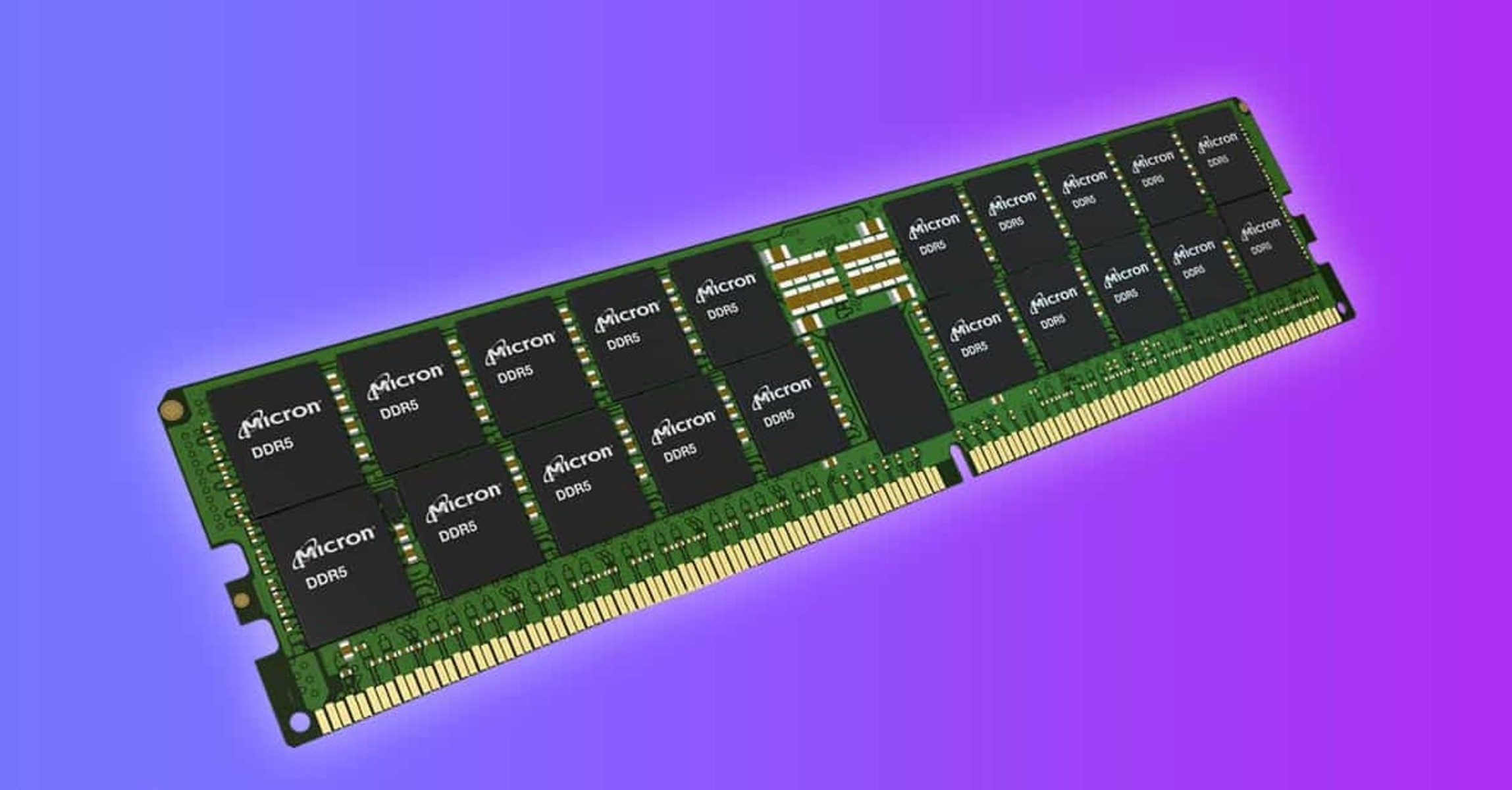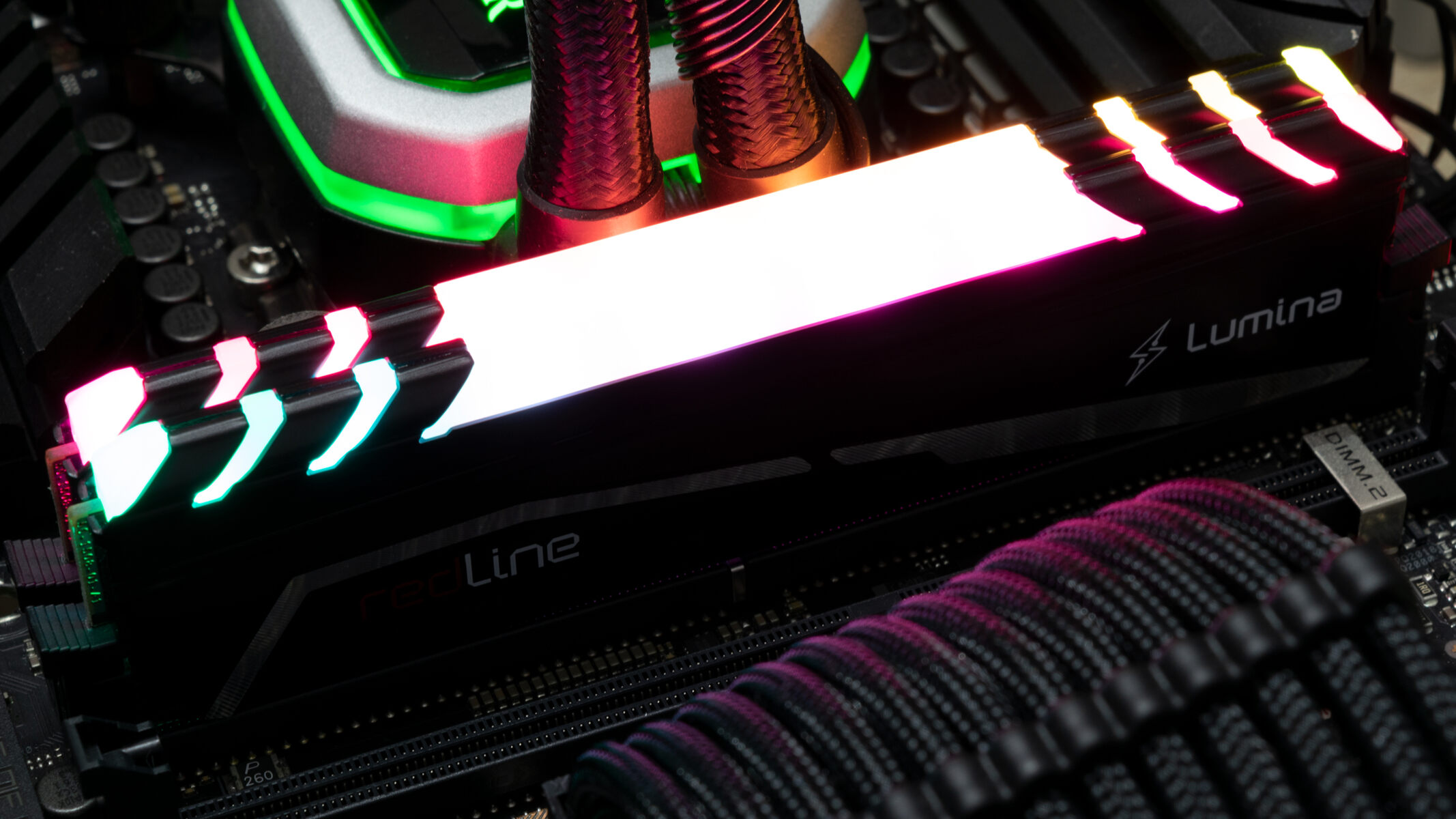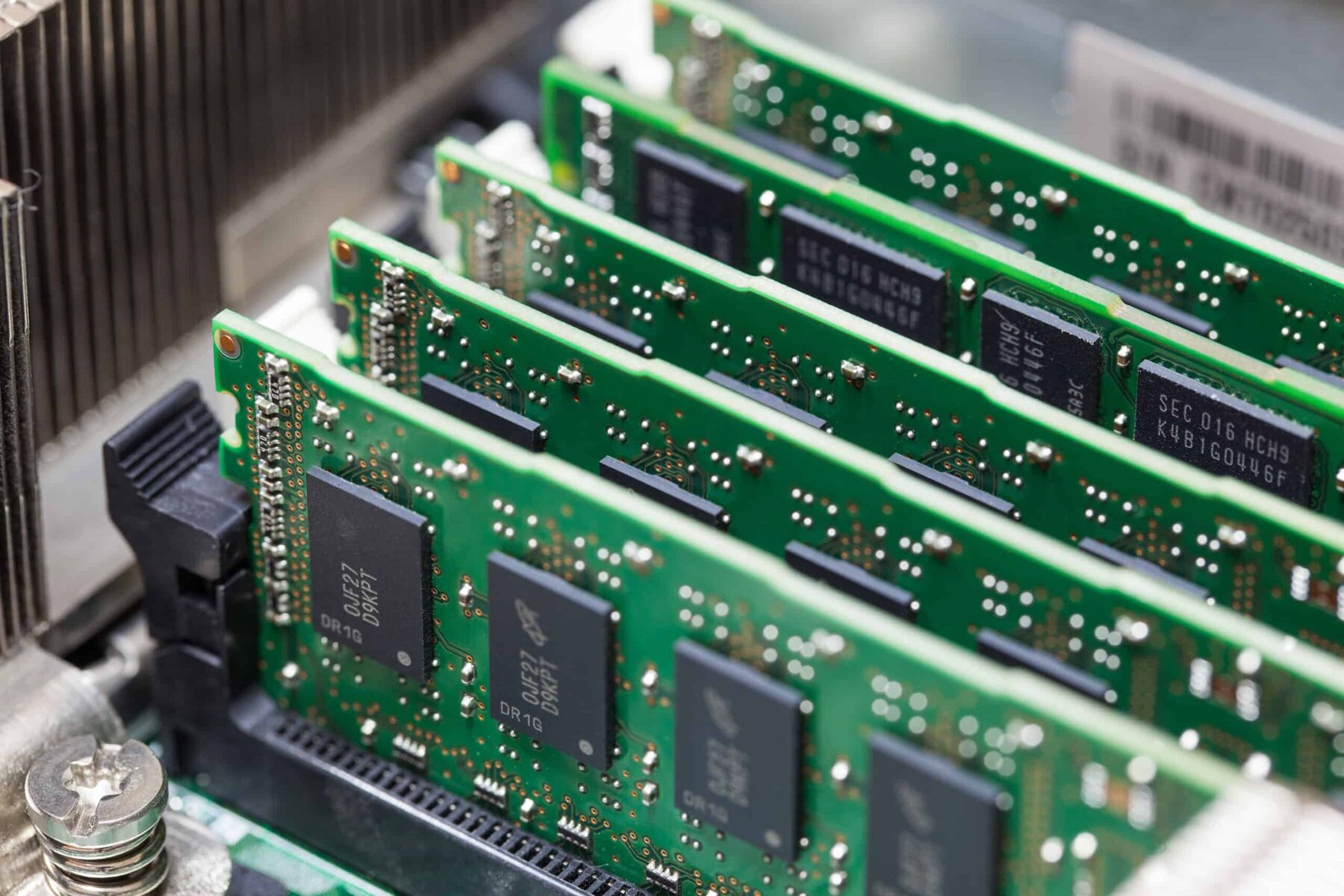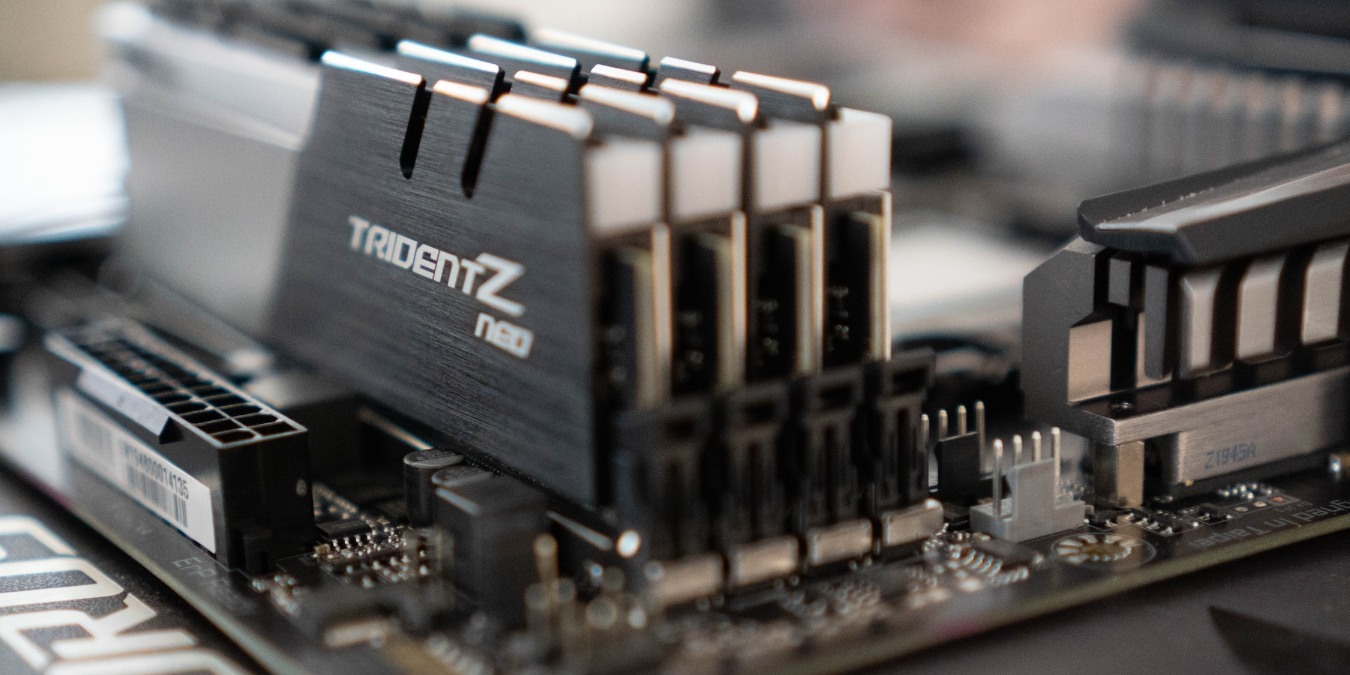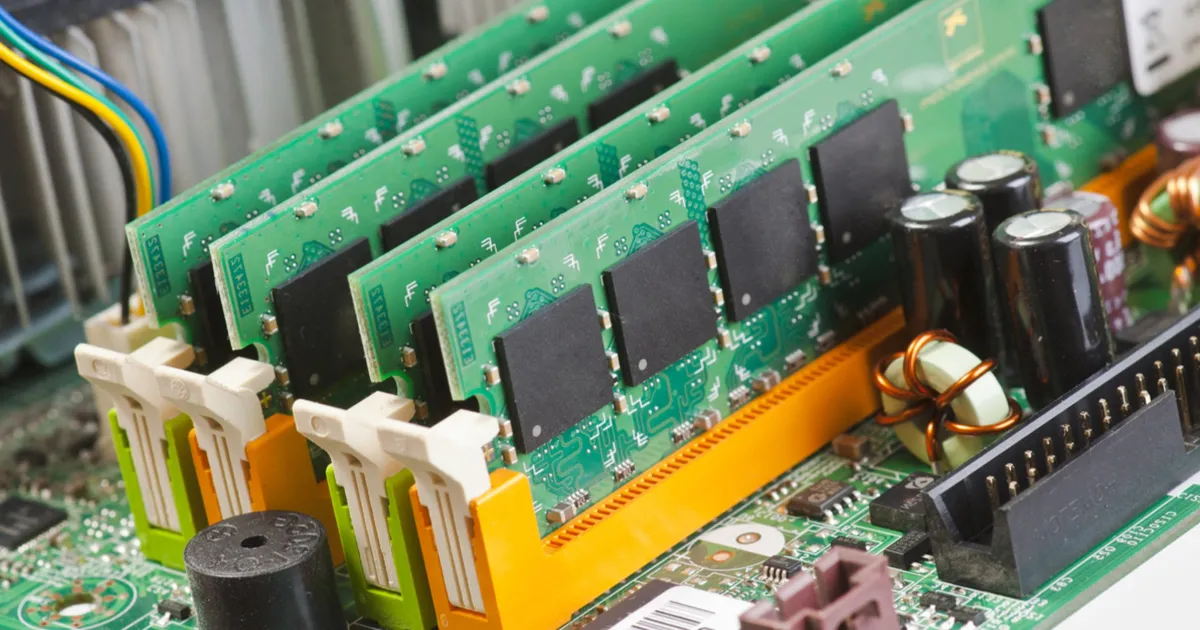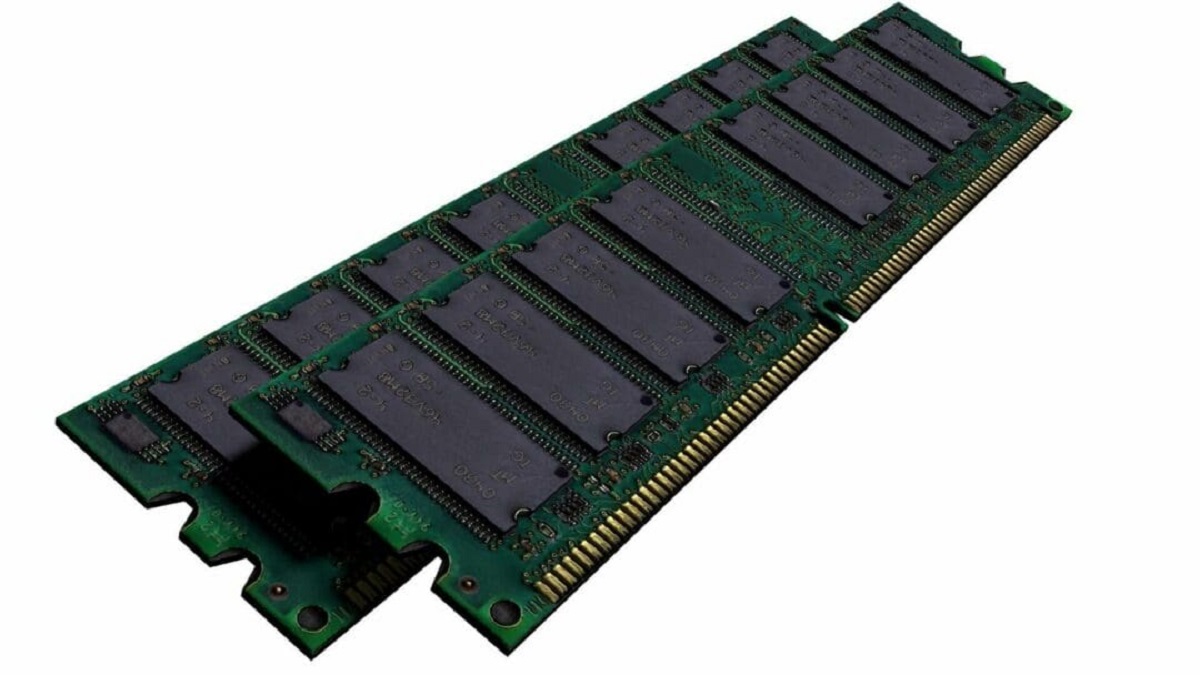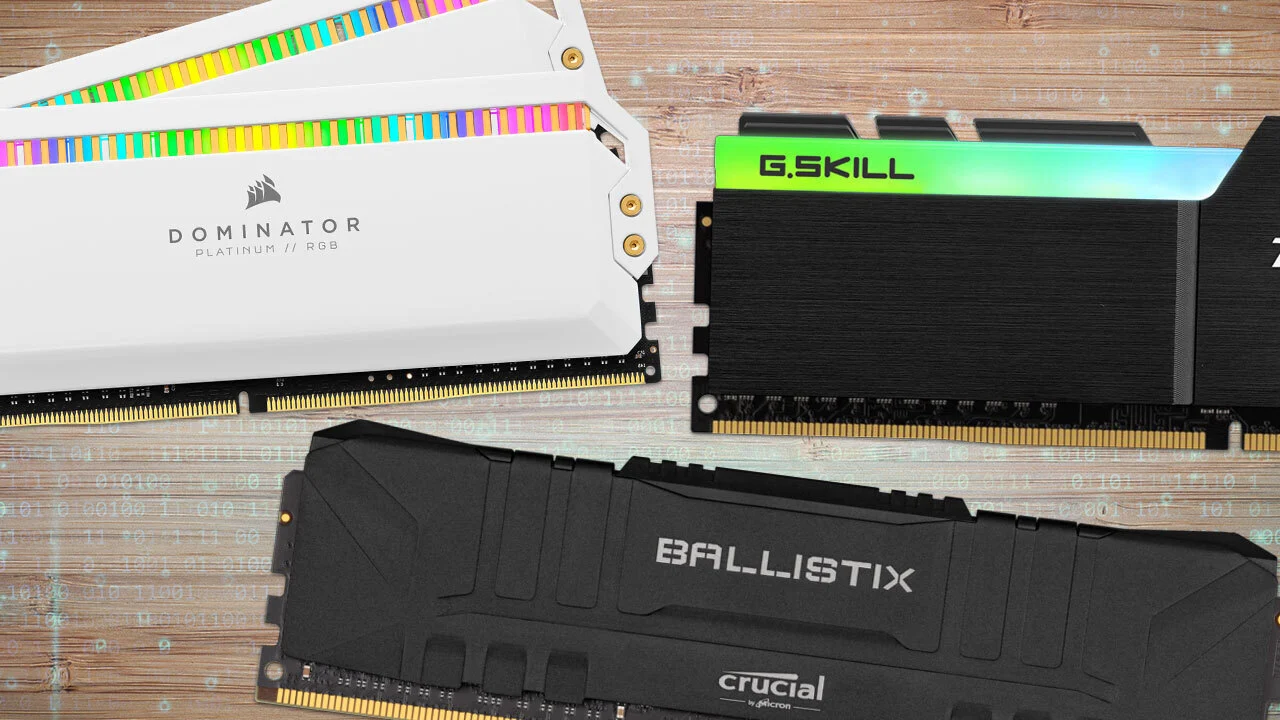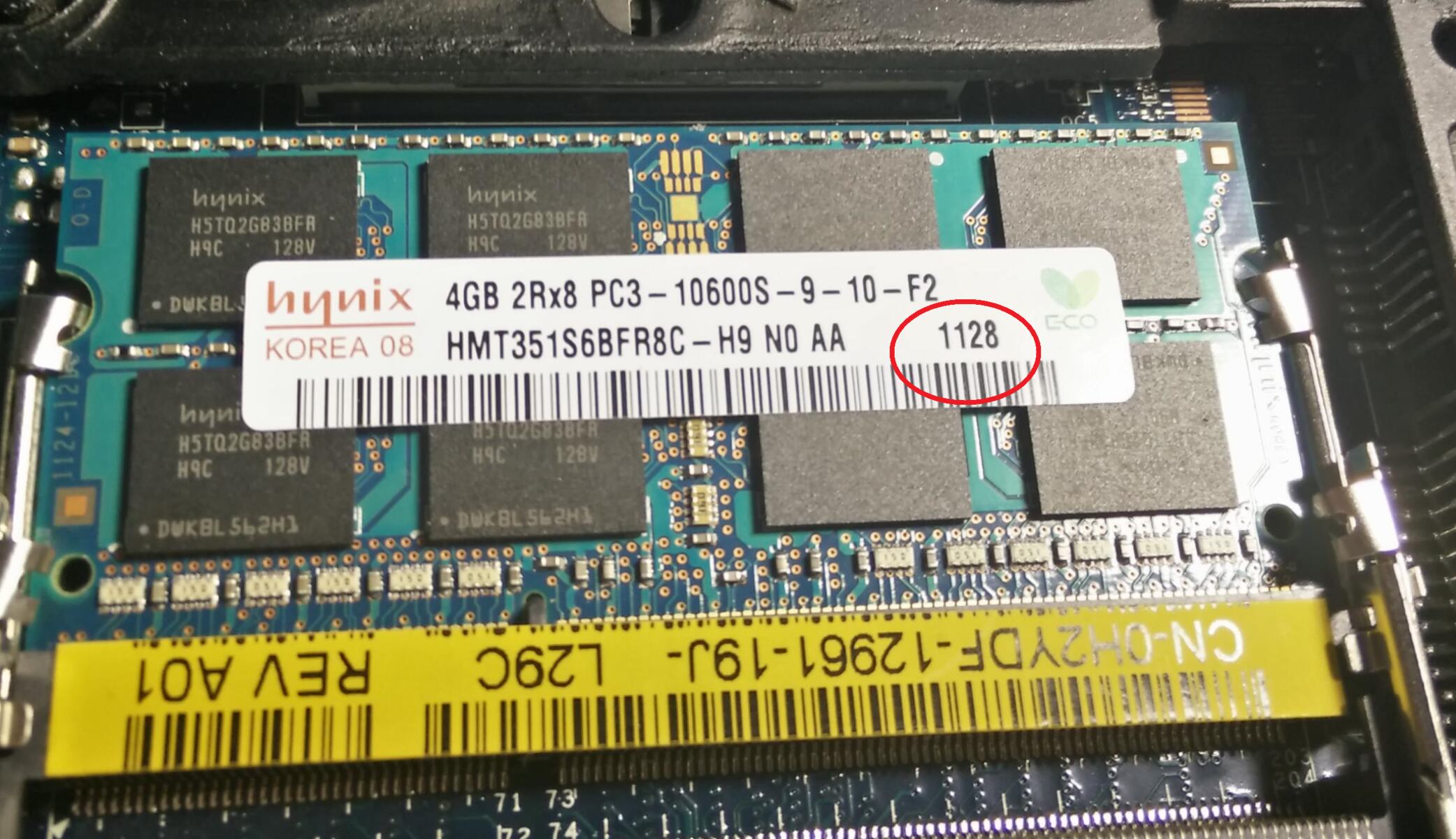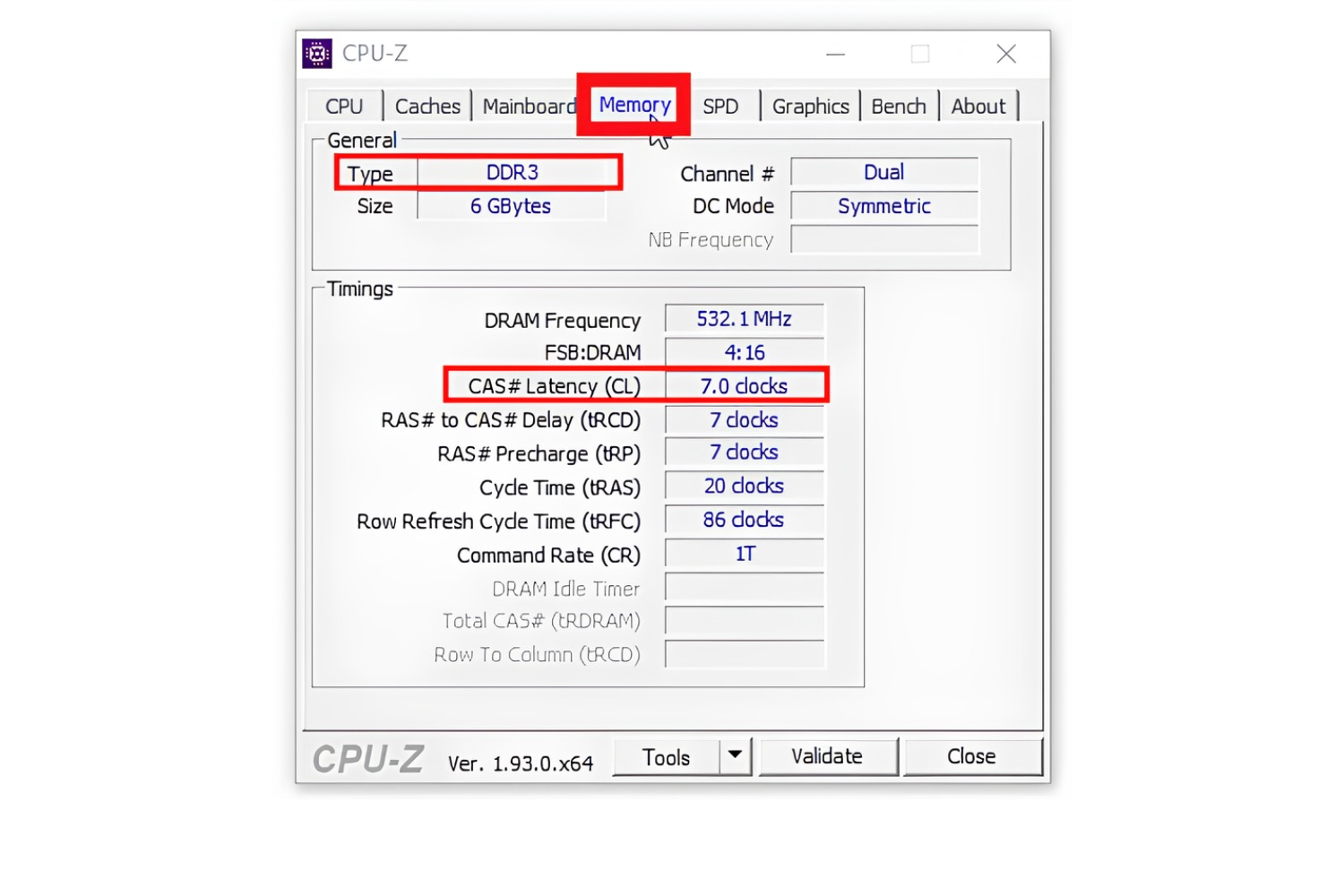Introduction
RAM, or Random Access Memory, is an integral component of a computer system that plays a crucial role in its performance. It serves as a temporary storage space for data that the computer actively uses, allowing for faster access compared to the slower storage devices like hard drives or SSDs. However, RAM latency can have a significant impact on system responsiveness and overall performance.
RAM latency refers to the delay between the request for data and the time it takes for the RAM to retrieve and deliver that data. Essentially, it measures how quickly the RAM can respond to data access requests. Lower RAM latency means shorter delays, resulting in a more efficient and responsive computer system.
Reducing RAM latency is essential for various reasons. Firstly, it enhances the overall speed of the system, significantly improving day-to-day operations like web browsing, multitasking, and running resource-intensive applications. Secondly, it can enhance gaming experiences by reducing lag and increasing the frame rate, leading to smoother gameplay. Additionally, lowering RAM latency can also benefit professionals in fields like video editing, graphic design, and scientific computing, where large amounts of data need to be processed efficiently.
Lowering RAM latency can be achieved through various techniques and optimizations. This article will explore several methods to help improve RAM latency and, subsequently, the overall performance of your computer system. By implementing these tips, you can unleash the full potential of your RAM and elevate your computing experience to new heights.
What is RAM Latency?
RAM latency refers to the time delay between the issuance of a data retrieval command and the actual delivery of the requested data by the RAM module. It is measured in nanoseconds (ns) and quantifies how long it takes for the RAM to access and provide the required information.
When a program or application requires data from the RAM, the system sends a signal called a memory address to the RAM module, specifying the location of the data. The RAM then locates the data and transmits it back to the CPU for processing. This entire process involves some time delay due to the physical characteristics of the RAM module and the speed at which it can access and transfer data.
RAM latency comprises several components:
- CAS Latency (CL): CAS (Column Address Strobe) latency is the most commonly used metric to measure RAM latency. It defines the time, in clock cycles, required for the RAM to locate and deliver the requested data after receiving the memory address from the CPU. Lower CAS latency values indicate faster access times and lower latency.
- RAS to CAS Delay (tRCD): RAS-to-CAS delay refers to the time delay between activating a memory row in the RAM and initiating the column address selection. It represents the time it takes for the RAM to prepare itself to retrieve data after receiving the memory address. Lower tRCD values indicate faster response times and reduced latency.
- RAS Precharge Time (tRP): RAS precharge time measures the time taken by the RAM to close a row after completing a read or write operation. It is the time required for the RAM to reset and prepare itself for the next command. Lower tRP values indicate faster reset times and reduced latency.
- Command Rate (CR): Command rate represents the time delay between two consecutive data retrieval commands. It quantifies the number of clock cycles the RAM module must wait before processing the next command. A lower command rate results in faster data access and reduced latency.
Understanding these components can help you make informed decisions when selecting RAM modules for your system. By opting for RAM modules with lower latency values, you can ensure quicker data access and improve overall system performance.
Importance of Lowering RAM Latency
Lowering RAM latency is of paramount importance for maximizing the performance and responsiveness of your computer system. Here are some key reasons why it is crucial to minimize RAM latency:
1. Improved System Responsiveness: Lower RAM latency translates into faster data retrieval times, resulting in improved system responsiveness. Tasks such as opening applications, accessing files, and switching between programs will be noticeably faster and smoother. This enhanced responsiveness leads to a more seamless and efficient computing experience.
2. Enhanced Multitasking Abilities: Lower RAM latency enables your system to handle multiple tasks simultaneously with greater ease. When running resource-intensive applications or multitasking between several programs, low latency ensures that data is retrieved quickly from memory, reducing delays and improving overall system performance.
3. Enhanced Gaming Experience: Gamers can benefit greatly from lower RAM latency. Reduced latency can minimize input lag, ensuring that actions in games are executed with minimal delay. This can make a significant difference in fast-paced games where split-second reactions are crucial. Lower RAM latency can also contribute to smoother gameplay by improving frame rates.
4. Accelerated Application Performance: Applications that require frequent data access, such as video editing software, graphic design tools, and 3D rendering programs, can greatly benefit from lower RAM latency. Faster data retrieval enables these applications to process information more efficiently, resulting in reduced loading times, faster rendering, and smoother workflow.
5. Optimal System Efficiency: Lower RAM latency ensures that the CPU spends less time waiting for data to be retrieved from memory. This reduces the idle time of the CPU and allows it to perform computations more efficiently. By minimizing latency, you can unlock the full potential of your hardware and achieve optimal system efficiency.
6. Future-Proofing Your System: As technology advances and demands on computer systems increase, lower RAM latency becomes even more crucial. By investing in RAM modules with lower latency values, you future-proof your system and ensure that it can handle the demands of future software updates, new applications, and advanced technologies.
In essence, lowering RAM latency directly contributes to a smoother, faster, and more efficient computing experience. By taking steps to minimize latency, you can unlock the full potential of your RAM and optimize the overall performance of your computer system.
Tips to Lower RAM Latency
Lowering RAM latency can greatly improve the performance of your computer system. Here are some effective tips to help you achieve lower RAM latency:
- Upgrade to Faster RAM: One of the most straightforward ways to reduce RAM latency is to upgrade to faster RAM modules. Look for RAM with higher clock speeds and lower CAS latency values. Faster RAM can significantly decrease the time it takes to access data, resulting in lower latency and improved system performance.
- Tighten RAM Timings: RAM timings refer to the specific values that govern how quickly the RAM can respond to data access requests. Adjusting these timings can help reduce latency. Explore your system’s BIOS or use overclocking software to tighten the primary timings, such as CAS latency (CL), RAS to CAS Delay (tRCD), and RAS Precharge Time (tRP).
- Overclock RAM: Overclocking your RAM can help achieve lower latency by pushing it beyond its default speed. However, note that overclocking may require additional cooling and may void warranty. Consult online resources and guides specific to your RAM model to perform overclocking safely and effectively.
- Optimize Memory Usage: Unnecessary background processes and applications can consume precious memory resources, leading to increased latency. Close any unnecessary programs and disable startup applications that are not essential. Additionally, keep an eye on memory-hogging processes using the Task Manager and terminate them if necessary.
- Clear Background Processes: Certain background processes, such as automatic updates or background scans, can cause intermittent spikes in RAM usage, resulting in latency issues. Adjust your system settings to control the scheduling and frequency of these processes, ensuring they do not interfere with your system’s performance.
- Update Drivers and Firmware: Outdated drivers and firmware can have a negative impact on RAM performance. Make sure to keep your system up-to-date by regularly checking for driver updates and firmware patches from the manufacturer’s website. Updated drivers can improve compatibility and performance, reducing latency.
Implementing these tips can help lower RAM latency, improving the responsiveness and overall performance of your computer system. It’s important to note that some optimizations, such as overclocking, may require advanced technical knowledge and can carry certain risks. Proceed with caution and refer to reliable sources for detailed instructions and guidelines specific to your hardware.
Upgrade to Faster RAM
One of the most effective ways to lower RAM latency is by upgrading to faster RAM modules. The speed of RAM is measured in clock cycles, with higher clock speeds indicating faster data access times. By investing in faster RAM, you can significantly reduce the time it takes for the RAM module to retrieve and deliver data, resulting in lower latency and improved system performance.
When upgrading your RAM, pay attention to two key specifications: clock speed and CAS latency (CL). Clock speed measures the rate at which the RAM can transfer data, while CAS latency refers to the number of clock cycles it takes for the RAM to respond to a request for data.
Opt for RAM modules with higher clock speeds, as they can provide quicker data access. For example, if your system currently runs on DDR3 RAM, consider upgrading to DDR4 RAM, which offers faster clock speeds and improved overall performance.
CAS latency, on the other hand, measures the delay between the issuance of a command and the RAM’s response. Lower CAS latency values indicate faster data retrieval times and lower latency. When upgrading your RAM, look for modules with lower CAS latency values, as this will result in a more responsive system.
It’s important to note that memory compatibility is a crucial factor when purchasing new RAM. Check your motherboard’s specifications and ensure that the RAM you choose is compatible with your system. Refer to the manufacturer’s guidelines and online resources to determine the maximum supported clock speed and the recommended CAS latency for your motherboard.
Upgrading to faster RAM can deliver a noticeable performance boost, particularly when combined with other optimization techniques. It not only decreases RAM latency but also enhances overall system responsiveness, allowing you to multitask more efficiently and run resource-intensive applications more smoothly.
Keep in mind that while upgrading to faster RAM can be beneficial, the improvements may vary depending on your specific system configuration and workload. It’s advisable to research and consult experts or online communities to ensure the compatibility and optimal configuration of your new RAM modules.
Tighten RAM Timings
Tightening the timings of your RAM is another effective method to reduce latency and optimize memory performance. RAM timings refer to the specific values that determine how quickly the RAM can respond to data access requests. By adjusting these timings, you can potentially lower latency and improve overall system responsiveness.
The primary RAM timings to focus on are CAS latency (CL), RAS to CAS Delay (tRCD), and RAS Precharge Time (tRP). These timings are typically expressed as a series of numbers, such as 9-9-9-24 or 15-17-17-35, where each number represents a specific timing parameter.
To tighten the RAM timings, you will need to access your system’s BIOS or use specialized software for memory overclocking. However, it’s important to note that not all RAM modules can handle aggressive timing adjustments, and pushing them too far can lead to instability or system crashes. Therefore, it’s recommended to proceed incrementally and test the stability of your system after each adjustment.
Start by decreasing the CAS latency (CL) value, which represents the number of clock cycles it takes for the RAM to respond to a command for data. Lowering the CAS latency value can result in faster data retrieval and reduced latency. However, bear in mind that lowering the CAS latency too much can also affect stability.
Next, focus on tightening the RAS to CAS Delay (tRCD) and RAS Precharge Time (tRP). These timings measure the delay between activating a memory row and selecting the column address or closing the row after a read or write operation, respectively. Lowering these timings can further reduce the time it takes for the RAM to process data requests.
Keep in mind that tighter timings may require increased voltage or additional cooling to maintain stability. It’s important to monitor your system’s temperatures and ensure that you have adequate cooling to prevent overheating. Additionally, it’s recommended to consult your RAM manufacturer’s specifications and guidelines to find the optimal timings for your particular RAM module.
By tightening the timings of your RAM, you can potentially achieve lower latency and enjoy a more responsive system. However, it’s crucial to approach this process with caution, test for stability after each adjustment, and be mindful of your system’s capabilities and cooling requirements.
Overclock RAM
Overclocking your RAM can be a viable option to reduce RAM latency and extract additional performance from your memory modules. Overclocking involves pushing the RAM beyond its default speed settings to achieve higher data transfer rates and lower latency, resulting in a faster and more responsive system.
Before overclocking your RAM, it’s important to understand the potential risks and requirements involved. Overclocking can increase power consumption and generate additional heat, which may require improved cooling solutions to maintain stability. Additionally, overclocking may void your RAM’s warranty, so proceed with caution and only if you are comfortable with the potential consequences.
To overclock your RAM, you will need to access your system’s BIOS or utilize specialized software designed for memory overclocking. The process may vary depending on your motherboard manufacturer and BIOS version, so refer to your motherboard’s manual or online resources for specific instructions.
When overclocking your RAM, you can adjust the clock speed, timings, and voltage settings to find the optimal balance between performance and stability. Begin by gradually increasing the RAM’s clock speed while monitoring the system’s stability through stress tests. If the system becomes unstable, you may need to adjust the timings and/or voltage to maintain stability.
It’s important to note that not all RAM modules can handle aggressive overclocking. Some modules may have limited overclocking capabilities, while others may require higher voltage or looser timings to maintain stability at higher speeds. Refer to your RAM manufacturer’s specifications and guidelines to better understand the overclocking potential of your specific RAM model.
Remember to stress test your system to ensure its stability after each overclocking adjustment. Stress tests help identify any instability issues and allow you to fine-tune your overclocking settings for optimal performance and reliability.
By overclocking your RAM, you can potentially achieve higher data transfer rates and lower latency, resulting in improved system performance. However, it’s essential to approach overclocking with caution, systematically adjust settings, and carefully monitor your system’s stability to ensure a safe and reliable overclock.
Optimize Memory Usage
Optimizing memory usage is a crucial aspect of reducing RAM latency and improving overall system performance. By efficiently managing how your computer utilizes memory, you can minimize unnecessary memory consumption and create a more responsive computing environment.
Here are some tips to help you optimize memory usage:
- Close unnecessary programs: Close any unnecessary programs and applications running in the background. Many applications continue to consume memory even when you are not actively using them, increasing RAM usage and potentially introducing latency. Use your task manager to identify resource-heavy applications and close them when not in use.
- Disable startup applications: Take control of the applications that automatically start when you boot your computer. Many programs add themselves to the startup list, consuming valuable memory resources. Disable or remove unnecessary startup applications to reduce memory usage and improve system responsiveness.
- Optimize browser tabs and extensions: Web browsers, especially when filled with multiple tabs and extensions, can consume significant amounts of memory. Close unused tabs and disable or remove unnecessary extensions to free up memory for other tasks.
- Use lightweight alternatives: Some software applications have lightweight alternatives that consume fewer system resources. Consider using lighter versions of resource-intensive applications or exploring alternative software that prioritizes efficiency and low memory usage.
- Manage virtual memory settings: Virtual memory, also known as the page file, acts as an extension of physical RAM. By adjusting the virtual memory settings, you can fine-tune how your system uses disk space to supplement RAM. Optimize the virtual memory settings to ensure that they support your system’s memory demands without impacting performance negatively.
- Regularly restart your computer: Restarting your computer clears the memory and closes any lingering processes. It helps prevent memory leaks and ensures a clean slate for optimal memory usage. Schedule regular restarts or shut down your computer when it’s not in use.
By implementing these memory optimization techniques, you can free up valuable RAM resources and minimize unnecessary memory consumption. This results in lower RAM latency and improved system responsiveness, allowing you to work more efficiently and smoothly.
Remember that optimizing memory usage is an ongoing process. As your computing needs change, periodically reassess your system’s memory usage and make adjustments accordingly to ensure the optimal utilization of available resources.
Clear Background Processes
Clearing background processes is an effective way to lower RAM latency and improve system performance. Background processes, such as unnecessary services and applications running in the background, consume valuable system resources, including memory. By identifying and terminating these processes, you can free up memory and reduce latency.
Here are some steps to clear background processes and optimize your system’s memory usage:
- Identify resource-heavy processes: Use the Task Manager or a system monitoring tool to identify processes that consume a significant amount of memory. Look for processes that are using memory but are not essential for your immediate tasks or system functioning.
- Terminate unnecessary processes: Once you have identified resource-heavy processes, selectively terminate those that are unnecessary. Right-click on the process and choose “End Task” or “End Process” to free up memory. Exercise caution when terminating processes and ensure that you are not closing any critical system processes.
- Disable unnecessary startup programs: Some applications automatically start and run in the background when you start your computer. These programs can consume memory, even if you don’t actively use them. Disable or remove unnecessary startup programs to reduce memory usage and improve system responsiveness.
- Manage system services: Many system services run in the background and consume memory. You can manage these services through the Services Manager in Windows or the equivalent tool on other operating systems. Disable or set specific services to manual startup if they are not essential for your daily tasks.
- Optimize background applications: Some applications, such as antivirus software or cloud syncing services, run in the background to perform important tasks. Review their settings and customize them to prioritize performance. For example, you can decrease scanning frequency or exclude non-essential files and folders from scans to reduce memory usage.
Clearing background processes reduces the load on your system’s memory, resulting in lower RAM latency and improved overall performance. By ensuring that only essential processes and applications are running, you can create a more efficient computing environment.
Regularly perform these steps to clear out unnecessary background processes and maintain optimal memory usage. Remember to exercise caution when terminating processes and avoid closing any critical system processes that are required for the stable operation of your computer.
Update Drivers and Firmware
Updating drivers and firmware is a crucial step in lowering RAM latency and improving overall system performance. Outdated drivers and firmware can negatively impact RAM performance and introduce latency issues. By keeping your drivers and firmware up to date, you can ensure optimal compatibility, stability, and functionality of your hardware components.
Here’s how you can update drivers and firmware to optimize RAM latency:
- Identify outdated drivers: Start by identifying outdated drivers on your system. You can manually check the driver versions in the Device Manager or use driver update software that scans your system for outdated drivers.
- Visit manufacturer websites: Go to the websites of your motherboard manufacturer, graphics card manufacturer, and other hardware vendors to find the latest driver updates. Look for driver download sections and search for appropriate drivers for your specific hardware model.
- Install driver updates: Download the latest driver versions provided by the manufacturer and follow the installation instructions. It’s generally recommended to uninstall the existing driver before installing the updated version to ensure a clean installation.
- Update firmware: Firmware updates for your motherboard and other hardware components can bring improvements in stability and performance. Visit the manufacturer’s website and search for firmware updates specific to your model. Follow the provided instructions to update the firmware.
- Automate driver updates: Consider using driver update software that automates the process of identifying and downloading the latest drivers for your hardware. These tools can save time and ensure that you have the latest drivers without manual searching and installation.
Updating drivers and firmware can have a significant impact on reducing RAM latency. Newer driver versions often include performance optimizations and bug fixes that can enhance RAM performance and overall system responsiveness.
Regularly check for driver and firmware updates, as new releases may address known issues and provide compatibility improvements. By keeping your hardware drivers and firmware up to date, you can optimize RAM performance, reduce latency, and ensure the stability and reliability of your computer system.
Remember to follow the manufacturer’s instructions carefully when updating drivers and firmware to avoid any potential issues. If you encounter any problems during the update process, consult the manufacturer’s support resources or reach out to their customer support for assistance.
Conclusion
In conclusion, lowering RAM latency is essential for optimizing the performance of your computer system. By reducing the time it takes for the RAM to retrieve and deliver data, you can significantly improve system responsiveness, multitasking capabilities, gaming experiences, and application performance.
Throughout this article, we have explored various methods to achieve lower RAM latency. Upgrading to faster RAM modules with lower CAS latency values can provide a noticeable performance boost. Tightening RAM timings and overclocking the RAM can further optimize data access speeds. Additionally, optimizing memory usage, clearing unnecessary background processes, and updating drivers and firmware help in minimizing latency and maximizing system efficiency.
While implementing these techniques, it’s important to make informed decisions and consider the compatibility and limitations of your hardware. Monitor system stability, temperatures, and voltage levels to ensure safe and reliable adjustments.
Remember that the impact of reducing RAM latency may vary depending on your specific system configuration, workload, and individual requirements. It’s advisable to experiment with different techniques and find the optimal balance that suits your needs.
By following the tips provided in this article and staying proactive in maintaining your computer system, you can unlock the full potential of your RAM, improve system performance, and have a more efficient and enjoyable computing experience.







